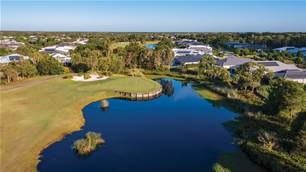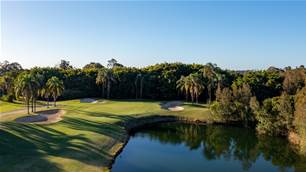When judges started submitting their lists in late 2022 for Golf Australia’s ranking of the nation’s Top-100 Public Access Courses, there was an unfamiliar presence among the courses gaining a foothold among the century-makers.
After several close calls and years of floating among the courses lying just outside the Top-100, Toowoomba Golf Club at Middle Ridge finally entered the national ranking in January this year, debuting at No.99.
“What a pleasant surprise Toowoomba was. Condition-wise, I couldn’t fault the place with very good kikuyu fairways and terrific bentgrass greens,” ranking judge Terry Anderson said.
“The layout is much better than what it was when I last played at Toowoomba about a decade ago. I really like the changes, including the relatively new par-4 9th hole,” added fellow judge Toby Greenwood.
While Top-100 ranker Joe Thomas was even more positive.
“With more improvements planned for the course at Toowoomba, I can only see it moving deeper into the Top-100 in 2025. Its conditioning alone has it well-placed among these courses that everyone can play,” he said.
As the saying goes, all good things take time.

Toowoomba Golf Club was founded in 1896 making it the second oldest club in Queensland, predated only by Townsville Golf Club which opened for play three months earlier. The Brisbane Golf Club was established a matter of weeks after Toowoomba hosted its first rounds.
The club was established by several Scottish families who were early settlers keen to recreate a piece of their golfing heritage in the heart of the Darling Downs. The 21 original members laid out a nine-hole course in Harristown, south of the town centre.
Over the next two decades, the club bounced around the edges of the town to different locations before settling on its current site at Middle Ridge in 1926.
Sydney professional Fred Popplewell – the 1925 Australian Open Champion, who would win a second national title three years later – returned from playing in The Open Championship at Royal Lytham and St Annes in England to assist with the design of the new course.
A newspaper report in May 1926 under the small headline, ‘Golfers’ Paradise’, gushes about the proposed course.
“The course has architectural features which experts state is possessed by no other inland links in Australia. Its chief charms are the variety which the holes offer and the views of imposing grandeur that can be had from the clubhouse and it various points on the course.
“The project has been conceived on a grand scale, and the club intends to spare no expense in converting the course into one that will make an Australian-wide appeal.”
It took 96 years but Toowoomba’s layout is finally gaining its wider appeal.
Much of that appeal comes on the back of improved presentation in recent years, as well as course design changes and the early stages of a tree removal program that has made the layout strategically a better golfing experience.
It has certainly progressed from the course experienced by the likes of famed players including Bobby Locke, Gary Player, Bruce Crampton, ‘Babe’ Didrikson Zaharias, Gene Sarazen, Ian Baker-Finch, Greg Norman and Peter Senior in years gone by.
Toowoomba’s turning point came just a handful of years ago when the club entered into an agreement to lease some of its land – incorporating the green site and approach on the 9th hole – to Aura Holdings for the construction of a retirement living development. The development is aptly named, The Ninth Middle Ridge.
As a result, the club now has the funding to take their course to the next level.
Course superintendent Mick Kelly and his team – with advice from Brisbane-based designer Brett Mogg – spent much of the first year of the pandemic building a redesigned 9th hole, transforming it into what is now a very good short par-4 that can be played a variety of ways.

More rebuilds have followed.
The 334-metre par-4 13th, which plays along the southern boundary of the course, has been redesigned with a new green complex, fairway bunker and greenside bunkers.
“There were two old bunkers on the left and an old bunker on the right that was about 40 metres short of the green. The putting surface had a lot of disease in it,” Toowoomba General Manager, David Marr, said.
“We took some trees out and reshaped the fairway and green, so water would run off the green and around the new bunker and not into it. We chose to do the 13th hole (after the 9th hole rebuild) because it was a good example of how we would have to do fairways, fairway bunkers, reshaped greens and greenside bunkers elsewhere across the course.”
The new revetted face bunkering here is a departure from Toowoomba’s traditional sand pushed-up-the-face style and Kelly’s team has done a beautiful job on these new sandy hazards. With the revetted face bunkering ‘experiment’ success on the 13th came remodelled bunkers on the par-5 10th and the recently opened par-3 3rd hole. These bunkers look great and, despite generally being smaller than the older bunkers, they have been shaped with a catchment area around them, just like you would find on any of the great links courses of Britain and Ireland.

But this is not a links course. In fact, it is far from it.
In a place known as ‘The Garden City’, it shouldn’t come as any real surprise that there are about 11,500 trees scattered across the Toowoomba course. Of those, there are 8,000 gums dominating the landscape, alongside pines, camphor laurels and a variety of other trees filling out the edges of most holes.
“The original improvement plan was based on bunkers, we’re taking into consideration the green surfaces and we’re also talking about which trees might need to come down, for reasons of safety as well as the quality of the turf and how the course plays,” Marr says.

An ongoing tree management program will undoubtedly improve the enjoyment of a round here. There are some tight driving holes – the dogleg left 4th and the dogleg right 5th holes being prime examples – where being accurate, with a low ball flight, is an absolute necessity. Get your drive too high here and you risk hitting into the canopy of the gums overhanging the fairway.
Toowoomba’s new holes were a highlight for me, especially the 13th with its width from the tee and the wide, subtle sloping green complex. The 155-metre 3rd, which only opened for play at the end of January, is another hole that will, in time, be regarded as one of the best here.

There is plenty to like elsewhere too.
The downhill tee shot over the lake to the green on the par-3 7th is a short iron for most but it still strikes fear into seasoned golfers. Hitting uphill towards the two-tiered green on the short par-5 17th, desperately looking for a birdie, is a real test of nerve and club selection skill with out-of-bounds to be found long of the green.
And then there are the playing surfaces. The kikuyu fairways really thrive in the Darling Downs climate, while the Penncross bentgrass greens would be the envy of many private city clubs with much bigger maintenance budgets.
I came away from Toowoomba in total agreeance with our Top-100 judge Joe Thomas – higher accolades are on the horizon for this outstanding regional course.
FACT FILE
LOCATION: Rowbotham St, Middle Ridge, Toowoomba, Queensland.
CONTACT: (07) 4635 1219.
WEBSITE: www.toowoombagolfclub.com.au
DESIGNERS: Fred Popplewell (1926), Brett Mogg (ongoing).
PLAYING SURFACES: Penncross bentgrass (greens), kikuyu (fairways, tees).
COURSE SUPERINTENDENT: Mick Kelly.
PGA PROFESSIONALS: Brenton Fowler.
GREEN FEES: $50 (18 holes, seven days). Visitor tee times available every day.
MEMBERSHIP: The club has commenced tailoring its membership options to encourage participation. There are plenty of options with packages ranging from full through to junior membership available. Check out the club’s website for more details.
ACCOLADES: Ranked No.99 in Golf Australia magazine’s Top-100 Public Access Courses for 2023.
Related Articles

Travel Feature: Golf’s Sunny Side

Review: Omaha Beach Golf Club













